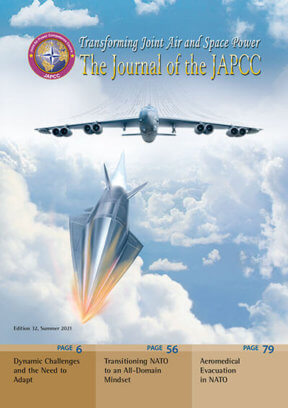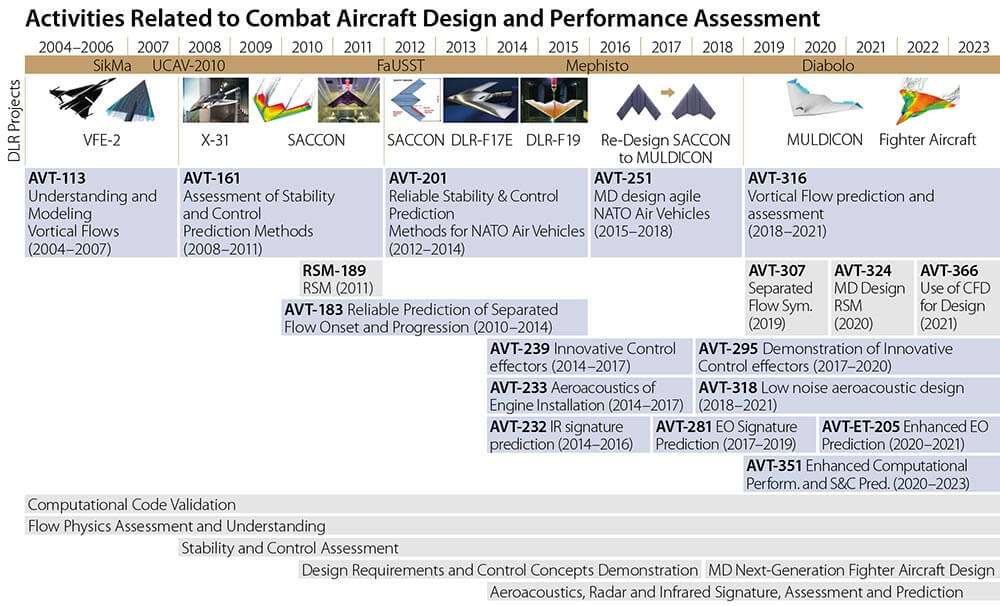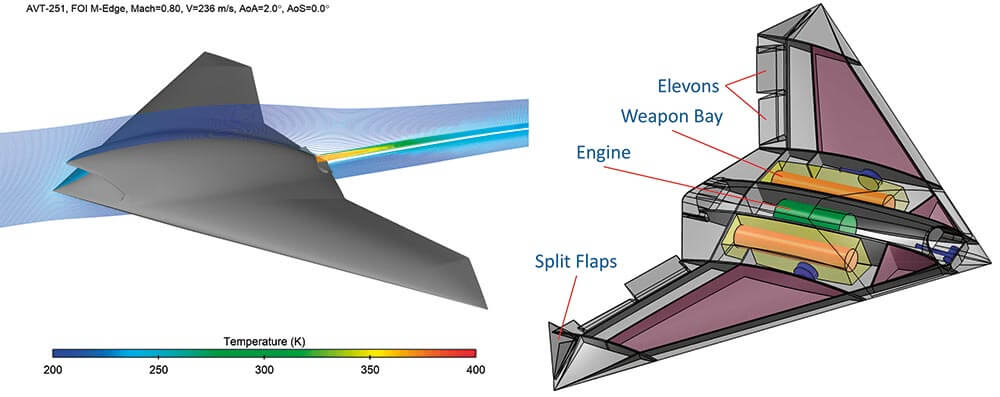Introduction
The NATO Science and Technology Organization (STO) has the objective to foster and improve the interchange of information relating to military research and development between the NATO nations. It is a follow-on organization of the Advisory Group for Aerospace Research and Development (AGARD) founded in 1952, which represented a pioneering and successful experiment in scientific cooperation among NATO nations. The founder and first chairman of AGARD, Dr Theodore von Kármán, dedicated his life to the enhancement of understanding and cooperation among scientists of different nations.
In 1998 a new organization was formed by the merging of AGARD and the Defence Research Group (DRG) into the Research and Technology Organization (RTO), which was transferred into the Science and Technology Organization (STO) in 2012. By that time, NATO STO established coverage of a broad spectrum of military research and technology topics, consolidating several domains like land, sea and air vehicle technologies, as well as military systems, medicine, electronics, and simulation.1
This article provides insights of the facilitation of multinational research and technology development under the umbrella of NATO STO by presenting an example of the effort which the Applied Vehicle Technology Panel (AVT) is contributing to the alliance. AVT focuses on platforms and platform technologies for land, sea, and air vehicles, and since AVT is an organization of voluntary contributors, the research itself is not funded by NATO but by the participating nations. This leads to the fact that the nations themselves suggest the research topics. Hence, AVT’s programme of work follows the aim for receiving a deeper understanding of physics and technologies, for sealing technology gaps within the nation’s own research programmes, and for fostering new ideas for the future. AVT is using the leverage of working in a multinational environment, where knowledge exchange happens and enablers are created, like test campaigns or field trials that would not have been realized in any single nation’s effort. The general working format of AVT is organized around major semi-annual meetings. During those AVT panel business weeks, various events like workshops and symposia on different topics are conducted, and currently more than 40 research task groups are meeting to discuss and coordinate their efforts. AVT is guided by a leading panel and technical committees, observing and supporting the technical programme of work.2
NATO AVT Research Task Groups on Fighter Design and Assessment
One of the current challenges for AVT to overcome is the understanding and prediction of fighter aerodynamics, as well as the development of reliable overall computational design methods. Therefore, for almost 20 years, AVT tasks groups have been dealing with the development of experimental and numerical methods, as well as tools to design and assess modern fighter aircraft. Recently, holistic design capabilities were addressed in order to provide a dedicated combination of methods and tools, which can lead to an optimal exploitation of their capabilities. Following the higher goal of leveraging the individual nation’s efforts, AVT has picked up that challenge. The following chart gives an example by DLR (German Aerospace Center) of how the national research programme is connected to NATO AVT activities and leverages the multilateral scientific contributions. The figure illustrates the type of target configurations focused on by the national military research projects at DLR along the top line. AVT’s related task groups and workshops are shown in the central work stream, while the bottom line provides a brief description of these core topics: Computational code validation, flow physics assessment, stability and control assessment, design requirements and control concepts design, multidisciplinary fighter aircraft design as well as design issues regarding aeroacoustics, infrared and radar signature.
The way NATO AVT research contributes to enhancing the alliance’s military capabilities, and supports the closing of technological gaps between its individual nations, is described by AVT research task groups dealing with the design and performance assessment of air vehicles and air vehicle technologies.
© DLR
AVT-161 & AVT-201: Setting the Foundations for a Multinational Fighter Aircraft Design
One of the major tasks within NATO AVT task groups in the past has been to improve the understanding of the flow physics of high angle of attack aerodynamics of fighter aircraft, as well as performance prediction and assessment, especially stability & control characteristics predicted by high-fidelity numerical methods. This approach has always corresponded to various national research programmes among NATO nations. One of the major initial task groups was AVT-161 on ’Assessment of Stability and Control Prediction Methods for NATO Air and Sea Vehicles’. AVT-161 aimed to establish the ability to accurately predict static and dynamic stability characteristics of air and sea vehicles using Computational Fluid Dynamics (CFD) methods to enhance vehicle design methodology. The scope was to assess state-of-the-art CFD methods for predicting static and dynamic stability characteristics of military vehicles in the air and sea domains, and identify areas requiring further development. This required sufficient experimental validation data to assess the ability of physical modelling to capture the nature of the flow physics of unsteady and off-design fluid dynamics processes for NATO air and sea vehicles. The target air vehicle to demonstrate the task accomplishment was a generic unmanned combat aerial vehicle (UCAV) configuration called SACCON – ‘Stability and Control CONfiguration’.
AVT-161 found that CFD could adequately predict the static stability characteristics for air and sea vehicles. However, for dynamic manoeuvres with vortex-dominated flow fields, the CFD predictions still needed to be improved. Several investigations showed that dynamic stability characteristics could be predicted within engineering accuracy, but the detail and physical nature of the flow still requires an experimental approach used in an integrated fashion with the CFD. It was also shown that non-linear system identification methods could make a valuable contribution to the computational effort, as they are able to identify areas of significant non-linearity without running an overly large number of CFD predictions. There is still a high demand for accurate and efficient methods to predict the performance of military air and sea vehicles, which led to the formation of the follow-on task group AVT-201 for the air vehicles domain.3
In AVT-201, the investigations were extended to the design and estimation of control device effectiveness for highly-swept, low-observable UCAV configurations. The generic SACCON configuration was extended with control devices, and additional experiments were conducted at a wider range of subsonic and transonic speeds. An additional task of AVT-201 was to transfer the knowledge base to full-scale applications.
AVT-201 was an additional element of a continuous research programme within AVT evaluating the aerodynamic performance of military air vehicles. This comprised essential fundamental research topics as well as programmes dealing with the assessment of fully-equipped military aircraft configurations. These continuous activities eventually provided the tools to establish a reliable design task to conduct a new design based on the application of computational methods.4
© FOI – Swedish Defence Research Agency (left), © DLR (right)
AVT-251: Evolving the Multidisciplinary Approach
These new requirements led to the formulation of AVT-251, which was established in order to accept those challenges. The plan was to perform a multidisciplinary redesign of the SACCON configuration towards a realistic aircraft concept within three years. The group would deal with non-linear aerodynamic flow physics, control device strategies for the medium to high angle of attack flight regimes, and with the design aspects regarding propulsion systems and signature constraints – everything relying purely on CFD and other numerical methods. However, it became clear from the start that a comprehensive investigation covering all relevant aspects of the design would be beyond the scope of the group. Instead, AVT-251 focused on the available resources and partners for some of the most critical aspects, and then linked everything together using conceptual aircraft design methods.
Within AVT-251, the main achievement was to demonstrate that the UCAV demonstrator MULDICON (‘Multidisciplinary-Configuration’) was able to conduct specific mission requirements that were typical for an advanced, agile UCAV configuration. Design trade studies were conducted within the framework of multiple groups, including design, aerodynamics, controls, structures, and engine integration. All of this was accomplished without additional wind tunnel testing of the new configuration.
Although the disciplinary spectrum was not comprehensive with respect to a fully approved design, all major design disciplines required to prove the validity of the demonstrator were involved. This study represents a good example of how modern design and analysis tools can streamline the design process, as well as being able to come up with a feasible configuration within a reasonably short period. The MULDICON configuration has similarities to a number of other modern UCAVs, and represents a feasible design with controllable flight characteristics at angles of attack that make the configuration agile and capable of fulfilling more challenging mission profiles.
Military applications, especially for manoeuvring air vehicles operating in a regime where the dynamics are non-linear, require an integrated approach of computation and experiments. If the integration is done correctly, the computational capability will be able to reduce the experimental campaigns required to adequately predict the flow. A feasible design can then be achieved in a much shorter period of time and for less expense. The results of AVT-251 showed that this approach was feasible, although certain supporting technology areas would still need to be improved.5
AVT-239 & AVT-295: Exploitation and Application of the Acquired Knowledge
In parallel to the above-mentioned activity, AVT-239 focused on the redesign of UCAV control systems to enhance the survivability of future military aircraft. Legacy approaches, using deflecting surfaces that open gaps and seams in the aircraft surface, are at odds with the demand for enhanced survivability. Within the task group, novel approaches using Active Flow Control (AFC) technology offered the promise of full aircraft flight control without compromising detectability. Therefore, several AFC technologies were identified, developed, and assessed against key vehicle performance and vehicle integration criteria (complexity, maintainability, reliability). The goal was to identify the technologies that minimized the reliance on conventional control surfaces during different portions of the vehicle mission profiles.
These expanded technical requirements, along with the expertise of previously mentioned activities, helped to initiate AVT-295 on ‘Demonstration of Innovative Control Effectors for Manoeuvring of Air Vehicles’. AVT-295 tested the aerodynamic performance of these technologies, during a representative ingress mission phase, on two platforms representative of next-generation tailless aircraft, the Lockheed Martin ‘Improved Control Effectors’-ICE configuration and the BAE Systems MAGMA configuration. Similar to the previous activities, AVT-295 first combined experimental wind tunnel testing and high-fidelity numerical simulations. Aerodynamic data was then incorporated into flight dynamics simulations, where flow control technologies were used to provide flight control in lieu of conventional control surfaces. Eventually, the technology was applied to the two corresponding aircraft demonstrators in order to prove the concept in flight tests.
The flight demonstration programme successfully confirmed the feasibility of using novel control technologies to stabilize and manoeuvre a tailless vehicle. This was accomplished not only in terms of performance, but also by identifying the steps and barriers of the implementation into a realistic aircraft. Furthermore, the approach of AVT-295 increased the confidence in the modelling and prediction methods when applied to full-scale vehicles.
AVT-295 flight testing led to many important results, including the conclusion that the technology was ‘feasible and reasonable’ for flight control. A direct implication of these results was the announcement in August 2019 by the Defense Advanced Research Projects Agency (DARPA) of its latest request for new ideas in the arena of flight controls. DARPA established the Control of Revolutionary Aircraft with Novel Effectors (CRANE)6 programme and sought contributions through a request for information. This is another excellent example of how NATO’s members benefit greatly from the experience of the collaboration of the NATO nations.7
Conclusion
The path of the AVT task groups described above is just one example of how multinational research is performed in the context of NATO STO. The joint enhancement of the knowledge base among NATO nations leveraged the knowledge transfer into national research programmes as well as into industrial technology and design approaches. The multinational collaboration provided experimental expertise and test capabilities, which any single nation probably could not maintain, and made computational simulation power available to complete a systematic approach in order to achieve a realistic and comprehensive design task by understanding flow physics.
Specifically, the national participants gained knowledge regarding stability and control prediction methods from CFD to Reduced Order Modelling (ROM), and an extended approach integrating experimental and numerical methods. The results of the group initialized and influenced further national research programmes within the participating nations, including the graduate-level education of future scientists and engineers. Finally, an experimental database created in these NATO Task Groups can further be used for CFD validation and as a reference for future design tasks. All of these benefits are the direct result of the commitment of partner nations within NATO working together on leveraged programmes of mutual interest and importance.
Within the network of NATO’s AVT community, scientists and engineers from more than seven allied nations and ten organizations shared their experience and technical capabilities in order to improve knowledge, including knowledge of simulation and design tools that are now available and accessible in the field of modern fighter aircraft design and assessment. Organized in more than 12 task groups, NATO’s research and development effort has overcome individual technological gaps and thereby strengthened NATO as a multinational collective. The multidisciplinary and multinational approach has proven its success by being applied to the development and in-flight demonstration of innovative flight control effectors in next-generation aircraft, which has reached an outstanding maturity level and greatly benefits the NATO nations.
















